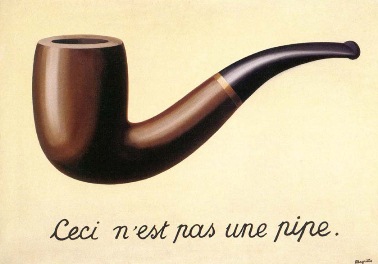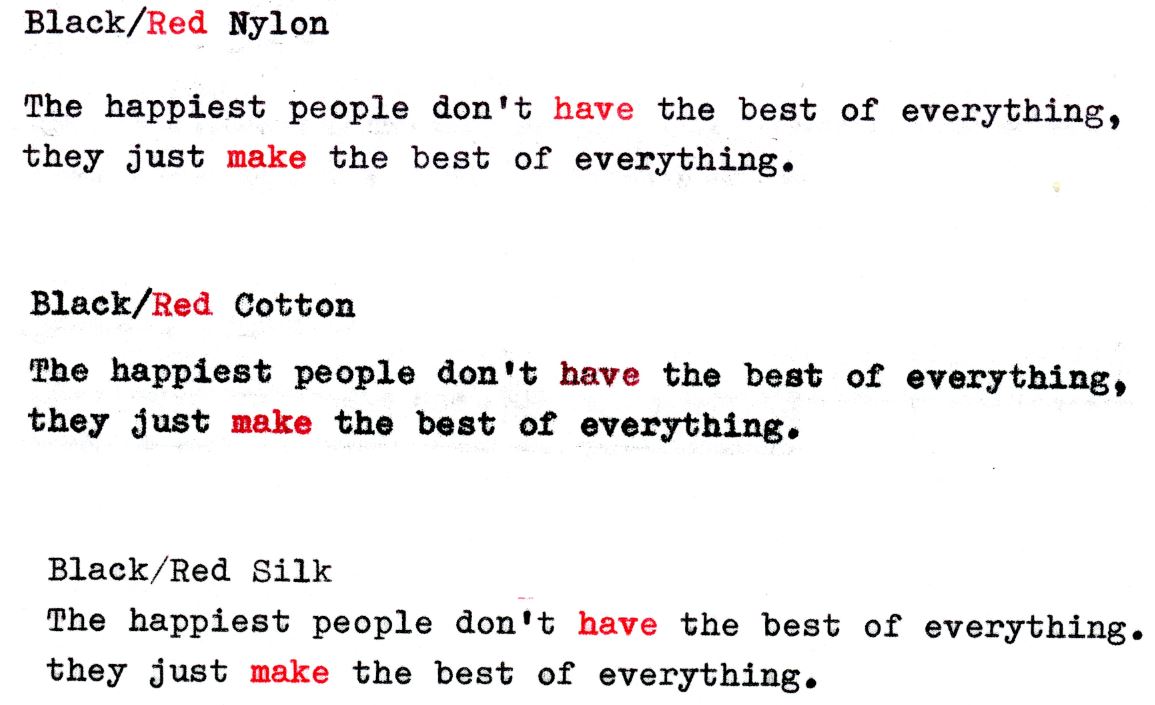```html
<div vocab="https://schema.org/" typeof="VisualArtwork">
<link property="sameAs" href="http://rdf.freebase.com/rdf/m.0439_q" />
La trahison des images
A <span property="artform">painting</span> also known as
<span>The Treason of Images</span> or
<span property="alternateName">The Treachery of Images</span>.
 <div property="description">
<div property="description">
The painting shows a pipe. Below it, Magritte painted,
<q lang="fr">Ceci n'est pas une pipe.</q>, French for
"This is not a pipe."
His statement is taken to mean that the painting itself is not a pipe.
The painting is merely an image of a pipe. Hence, the description,
"this is not a pipe."
Similarly, the image shown above is neither a pipe nor even a painting,
but rather a digital photograph.
The painting is sometimes given as an example of meta message conveyed
by paralanguage. Compare with Korzybski's <q>The word is not the thing</q>
and <q>The map is not the territory</q>.
</div>
- Artist:
<span property="creator" typeof="Person">
<span property="name">René Magritte</span>
</span>
- Dimensions:
<span property="width" typeof="Distance">940 mm</span> ×
<span property="height" typeof="Distance">635 mm</span>
- Materials:
<span property="artMedium">oil</span> on <span property="artworkSurface">canvas</span>
</div>
```
```html
<div vocab="https://schema.org/" typeof="VisualArtwork">
<link property="sameAs" href="http://rdf.freebase.com/rdf/m.0dbwsn" />
My Bed
My Bed, first created in <time property="dateCreated" datetime="1998">1998</time>,
is an <span property="artform">installation</span> by the British artist Tracey Emin.
 <div property="description">
<div property="description">
<cite>My Bed</cite> was exhibited at the Tate Gallery in
<time datetime="1998">1999</time> as one
of the shortlisted works for the Turner Prize. It consisted of her
bed with bedroom objects in an abject state, and gained much media
attention. Although it did not win the prize, its notoriety has
persisted.
</div>
The artwork generated considerable media furore, particularly over the
fact that the <span property="artMedium">bedsheets</span> were stained
with bodily secretions and the floor had items from the artist's room
(such as <span property="artMedium">condoms</span>,
<span property="artMedium">a pair of knickers</span> with menstrual
period stains, other detritus, and functional, everyday objects,
including a <span property="artMedium">pair of slippers</span>). The
<span property="artMedium">bed</span> was presented in the state that
Emin claimed it had been when she said she had not got up from it for
several days due to suicidal depression brought on by relationship
difficulties.
</div>
```
```html
<div vocab="https://schema.org/" typeof="VisualArtwork">
<link property="sameAs" href="http://www.pada.net/members/memPicFull.php/38/367" />
Still Life under the Lamp
<span property="artform">Print</span> from <time property="dateCreated" datetime="1962">1962</time>
by Pablo Picasso. Numbered from the edition of <span property="artEdition">50</span>,
each signed by the artist in pencil, lower right: Picasso.
 <div property="description">
<div property="description">
<cite>Still Life under the Lamp</cite>, from 1962, made when the artist
was eighty years old, are counted among Picasso’s most important works
in linocut, a technique that he explored in the late 1950s and early
1960s. The progressive proofs show the step by step sequence by which
Picasso created his linocut images showing the development of the
image into its final form.
</div>
- Artist:
<span property="creator" typeof="Person">
<span property="name">Pablo Picasso</span>
</span>
- Dimensions:
<span property="width" typeof="Distance">25 3/16 inches</span> ×
<span property="height" typeof="Distance">20 3/4 inches</span>
- Materials:
<span property="artMedium">linoprint</span> on <span property="artworkSurface">paper</span>
-
See also here
and here.
</div>
```






 Illustration by Beppe Giacobbe
Illustration by Beppe Giacobbe




















.jpg)
.jpg)

.jpg)

 <div property="description">
<div property="description">
 <div property="description">
<div property="description">
 <div property="description">
<div property="description">
 <meta property="sameAs" content="
<meta property="sameAs" content="









